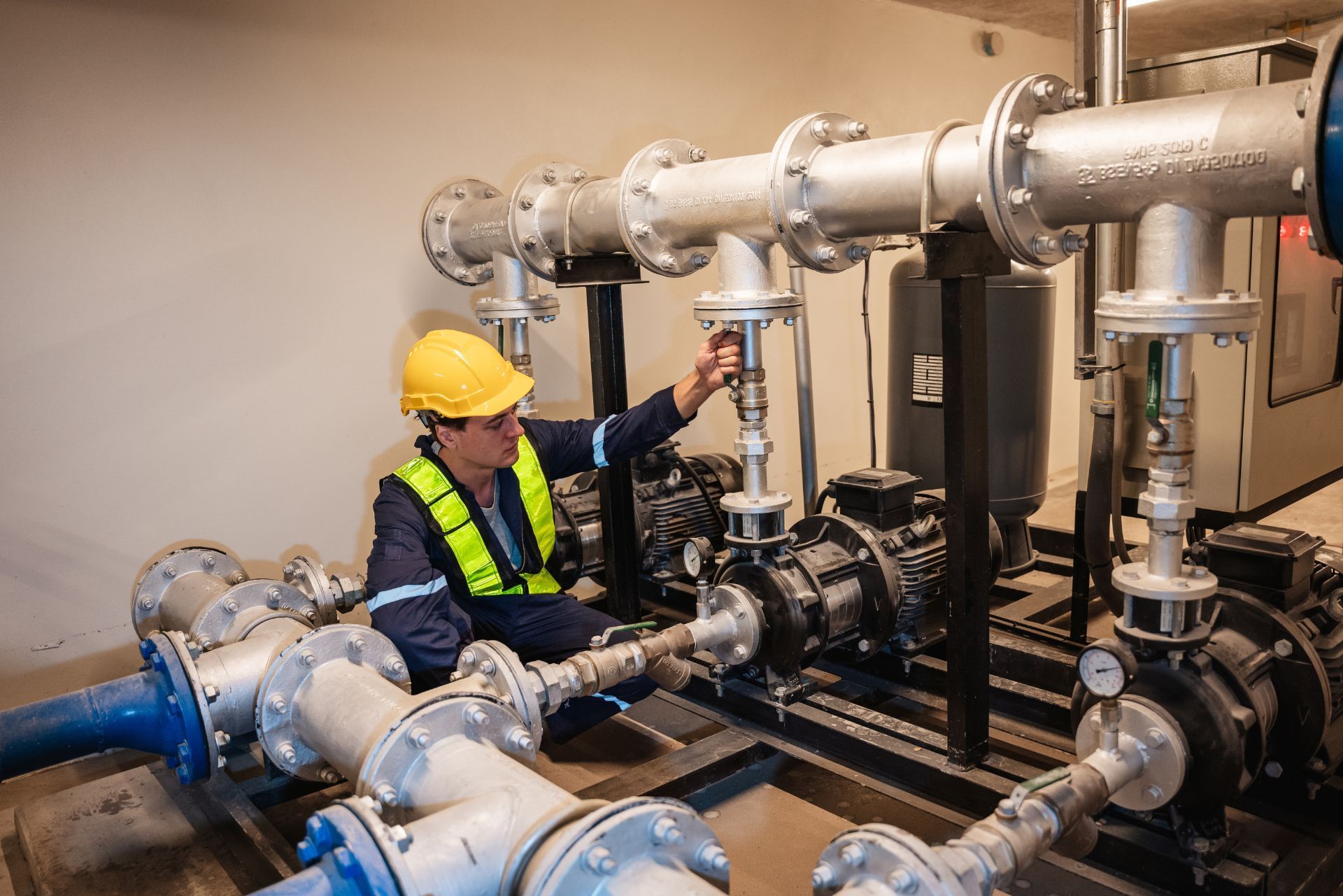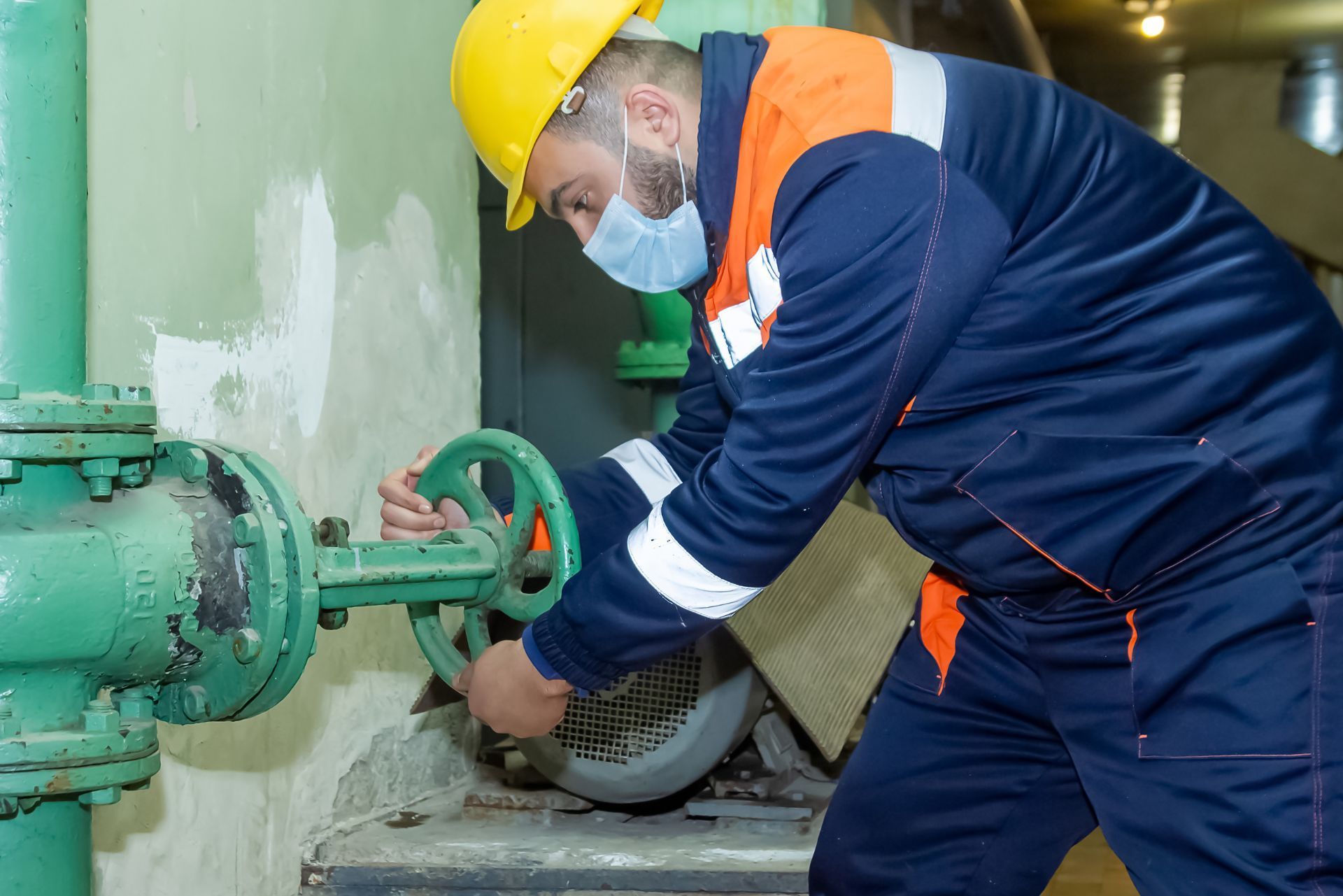Ohio Well System Plumber Insurance

Index
Understanding the Importance of Insurance for Ohio Well System Plumbers
Rising Insurance Costs and Industry Challenges
The Scale and Scope of the Plumbing Industry in Ohio and Beyond
Common Risks Faced by Well System Plumbers and Insurance Coverage Options
Best Practices for Managing Insurance Costs and Risks
Preparing for the Future: Industry Trends and Insurance Implications
Contact Us
Phone
216-600-2828
Location
100 N. Center Street PO Box 627 LaGrange, OH 44050
For plumbers specializing in well systems in Ohio, understanding the nuances of insurance coverage is essential to protect their business, employees, and clients. With the plumbing industry experiencing shifts in workforce dynamics and insurance costs, staying informed about the latest trends and requirements can help contractors navigate risks and maintain compliance. This comprehensive guide explores the key aspects of plumber insurance in Ohio, highlighting industry statistics, insurance cost factors, and best practices to ensure well system plumbers are adequately covered.
Ohio’s private industry employers reported 84,800 nonfatal workplace injuries and illnesses in 2023, resulting in a total recordable cases (TRC) incidence rate of 2.2 cases per 100 full-time equivalent workers. This statistic underscores the importance of robust insurance policies to mitigate financial exposure from workplace incidents. For more detailed information on workplace injuries in Ohio, the
U.S. Bureau of Labor Statistics provides an insightful overview.
Understanding the Importance of Insurance for Ohio Well System Plumbers
Insurance is not just a regulatory requirement for plumbers working on well systems in Ohio—it is a critical safeguard against the risks inherent in the trade. From on-site accidents to property damage and liability claims, insurance helps plumbers manage the financial fallout from unforeseen events. The nature of plumbing work, especially when dealing with well systems, involves various hazards, including exposure to hazardous materials, working in confined spaces, and operating heavy machinery. These factors contribute to the necessity of having robust insurance coverage to protect both the plumber and their clients.
Workers’ compensation insurance is particularly vital, as it covers medical expenses and lost wages for employees injured on the job. In Ohio, plumbers pay approximately $2.14 per $100 of payroll for workers’ compensation insurance, a rate that reflects the risk profile of the plumbing trade. This cost is an important consideration for contractors budgeting for their overall insurance expenses. For context on these rates, ContractorNerd offers detailed insights into insurance costs for plumbers. Furthermore, understanding the nuances of these insurance policies can help contractors make informed decisions that not only protect their business but also enhance their reputation in the community.
Liability insurance, including general liability and professional liability, protects against claims of property damage or bodily injury caused by the plumber’s work. Given the potential for water damage in well system installations or repairs, having comprehensive liability coverage is essential. In addition to protecting against claims, liability insurance can also provide peace of mind for plumbers, allowing them to focus on their craft rather than worrying about potential legal repercussions. Moreover, many clients now expect contractors to carry adequate insurance, viewing it as a sign of professionalism and reliability. This expectation can influence a plumber's ability to secure contracts, especially in competitive markets.
Moreover, the landscape of plumbing is evolving with advancements in technology and sustainable practices. Plumbers are increasingly being called upon to install energy-efficient systems and environmentally friendly solutions. This shift not only requires specialized training but also brings new risks that must be accounted for in insurance policies. For instance, if a new eco-friendly system fails due to improper installation, the financial implications could be significant. Therefore, plumbers must stay informed about the latest insurance products tailored to cover these modern challenges, ensuring they are adequately protected as they adapt to the changing demands of the industry.

Rising Insurance Costs and Industry Challenges
Ohio well system plumbers are not immune to the broader industry trends affecting insurance premiums. Nationwide, water well contractors have experienced significant increases in their 2024 insurance renewals. This spike is attributed to a rise in overall claims and escalating repair costs, which insurers are factoring into their pricing models.
Steven Smith of Assured Partners/Front Range Insurance Group highlights the importance of preventive measures, stating, “If I was going to say the best tool any contractor has in his hand, it’s a post-hire pre-placement physical.” This approach helps reduce workplace injuries by ensuring employees are fit for their roles, which can ultimately lower insurance claims and premiums. The National Ground Water Association provides more context on these insurance trends and expert insights here.
For Ohio plumbers, staying proactive about safety and employee wellness is a practical strategy to combat rising insurance costs. Implementing rigorous safety protocols and investing in employee health screenings can reduce the frequency and severity of claims, benefiting both workers and business owners. Moreover, training programs that focus on best practices in equipment handling and emergency response can further enhance workplace safety, creating a culture of awareness and preparedness among employees. This not only protects the workforce but also fosters a sense of responsibility and teamwork, which can lead to improved job satisfaction and retention rates.
Additionally, as the industry grapples with these rising costs, many contractors are exploring innovative technologies to streamline operations and enhance safety measures. For instance, the integration of telematics in vehicles can monitor driving behaviors, helping to reduce accidents and associated claims. Similarly, employing advanced water well drilling equipment that minimizes risk can also contribute to lower insurance premiums over time. By embracing these technological advancements, Ohio plumbers can not only safeguard their operations but also position themselves competitively in a challenging market.
The Scale and Scope of the Plumbing Industry in Ohio and Beyond
The plumbing industry in the U.S. is a substantial economic sector, valued at around $60 billion annually with over 450,000 businesses nationwide. Ohio, with its significant number of private industry employers, contributes to this robust market. The labor force in plumbing is projected to peak in 2028 at approximately 569,000 workers before experiencing a slight decline, reflecting shifting workforce dynamics and demand trends. This growth is largely driven by the increasing complexity of plumbing systems in modern construction, as well as the rising need for sustainable plumbing solutions that adhere to environmental standards.
These industry dynamics influence insurance markets as well. A larger workforce and active business environment typically translate to increased insurance activity and evolving risk profiles. Plumbers specializing in well systems must remain aware of these trends to anticipate changes in insurance availability and pricing. Furthermore, as technology advances, the integration of smart plumbing systems is becoming more prevalent, necessitating a workforce skilled in both traditional plumbing and modern technology. This evolution not only enhances efficiency but also opens up new avenues for plumbers to diversify their services. More detailed industry statistics can be found on ZipDo Education Reports and ConsumerAffairs.
Moreover, the plumbing industry is also facing challenges related to workforce training and retention. As the demand for skilled plumbers continues to rise, educational institutions and trade schools in Ohio are stepping up to provide comprehensive training programs that focus on both practical skills and safety protocols. This emphasis on education is crucial, as it ensures that new entrants into the field are well-equipped to handle the complexities of modern plumbing systems. Additionally, ongoing professional development is becoming increasingly important, with many plumbers seeking certifications in specialized areas such as green plumbing or advanced leak detection technologies. This focus on continuous learning not only enhances individual career prospects but also contributes to the overall professionalism and reliability of the plumbing industry.
Common Risks Faced by Well System Plumbers and Insurance Coverage Options
Well system plumbers encounter unique risks compared to general plumbing professionals. Working with underground water sources, drilling equipment, and potentially hazardous materials increases the likelihood of workplace injuries and property damage. Additionally, environmental regulations and client expectations add layers of complexity to the job. The physical nature of their work often involves heavy machinery and the potential for accidents, such as falls or equipment malfunctions, which can lead to serious injuries. Moreover, the job requires a deep understanding of geology and hydrology, as improper handling of well systems can result in contamination of water supplies, posing health risks to communities.
Insurance policies tailored to well system plumbers often include:
- General Liability Insurance: Covers third-party bodily injury and property damage.
- Workers’ Compensation Insurance: Mandatory in Ohio, covers employee injuries on the job.
- Commercial Auto Insurance: Protects vehicles used for transporting equipment and personnel.
- Equipment and Tool Coverage: Insures costly drilling and plumbing tools against theft or damage.
- Environmental Liability Insurance: Addresses pollution or contamination claims arising from well system work.
Given that approximately 10% of U.S. homes experience plumbing problems annually, leading to water damage costs exceeding $13 billion, the risk of costly claims is significant. This statistic highlights the importance of comprehensive insurance coverage to protect against potential liabilities. Furthermore, the evolving nature of regulations surrounding water safety and environmental protection means that well system plumbers must stay informed and compliant, adding another layer of responsibility to their work. Regular training and updates on best practices can not only mitigate risks but also enhance the reputation of plumbing professionals in the eyes of their clients. Learn more about these risks and industry data at
ZipDo Education Reports.

Best Practices for Managing Insurance Costs and Risks
Ohio well system plumbers can adopt several strategies to manage insurance costs effectively while maintaining adequate coverage:
- Invest in Safety Training: Regular employee training reduces accident rates and insurance claims.
- Implement Post-Hire Physicals: As Steven Smith advises, post-hire pre-placement physicals help ensure workers are physically capable, lowering injury risks.
- Maintain Accurate Records: Detailed documentation of safety measures and incidents can support favorable insurance reviews.
- Shop Around for Insurance Providers: Comparing policies and premiums helps find the best fit for specific business needs.
- Bundle Insurance Policies: Combining general liability, workers’ compensation, and commercial auto insurance can yield discounts.
These proactive measures not only protect the business but also contribute to a safer work environment, which is increasingly important as insurance providers scrutinize risk factors more closely. Additionally, fostering a culture of safety within the organization can enhance employee morale and productivity. When workers feel secure in their environment, they are more likely to perform at their best, which can lead to improved service delivery and customer satisfaction. This not only helps in retaining skilled labor but also positions the business favorably in the eyes of clients who value safety and reliability.
Moreover, engaging with insurance professionals to understand policy nuances can uncover hidden opportunities for savings. For instance, some insurers offer incentives for businesses that demonstrate a commitment to risk management through regular audits and safety improvements. By staying informed about industry trends and emerging risks, plumbers can adapt their strategies accordingly, ensuring that they remain competitive while effectively managing their insurance costs. This proactive approach can ultimately lead to a more resilient business capable of weathering unforeseen challenges.
Preparing for the Future: Industry Trends and Insurance Implications
Looking ahead, Ohio’s well system plumbers should be mindful of evolving industry trends that will impact insurance. The plumbing labor force is expected to peak in 2028 before a slight decline, signaling potential shifts in workforce availability and demand. Additionally, many homeowners remain unprepared for emergency plumbing repairs, with 69% of Indiana homeowners lacking preventive maintenance plans and 65% having less than $1,000 set aside for emergencies. These factors could lead to increased claims and insurance challenges for contractors.
By staying informed about these trends and maintaining strong insurance practices, Ohio plumbers can better navigate the complexities of their trade. The Williams Comfort Air and Mr. Plumber report offers valuable insights into homeowner preparedness and its impact on the plumbing industry.
Ultimately, well system plumbers who prioritize risk management, invest in employee health, and maintain comprehensive insurance coverage will be best positioned to thrive in Ohio’s competitive market. As the demand for sustainable plumbing solutions increases, plumbers may also need to adapt to new technologies and eco-friendly practices. Innovations such as water-saving fixtures and smart plumbing systems are becoming more prevalent, and plumbers who embrace these changes can differentiate themselves in the marketplace. This shift not only meets consumer demand for sustainability but also aligns with regulatory trends aimed at reducing water waste and improving efficiency.
Moreover, the rise of digital platforms and mobile applications is transforming how plumbing services are marketed and delivered. Plumbers who leverage technology can enhance customer engagement through online booking systems, real-time service updates, and transparent pricing models. This tech-savvy approach not only streamlines operations but also builds trust with clients, ultimately leading to higher customer satisfaction and loyalty. As the industry continues to evolve, those who remain agile and proactive in adopting these advancements will likely see significant benefits in both their operational efficiency and their bottom line.
Conclusion
Ohio well system plumber insurance is a multifaceted topic that requires attention to industry trends, risk factors, and cost management strategies. With a significant number of workplace injuries reported statewide and rising insurance premiums affecting contractors nationwide, securing the right insurance coverage is more important than ever.
By understanding the specific risks associated with well system work, leveraging expert advice such as post-hire physicals, and staying abreast of industry developments, Ohio plumbers can protect their businesses and employees effectively. Comprehensive insurance policies tailored to the unique demands of well system plumbing ensure peace of mind and financial security in an evolving marketplace.


